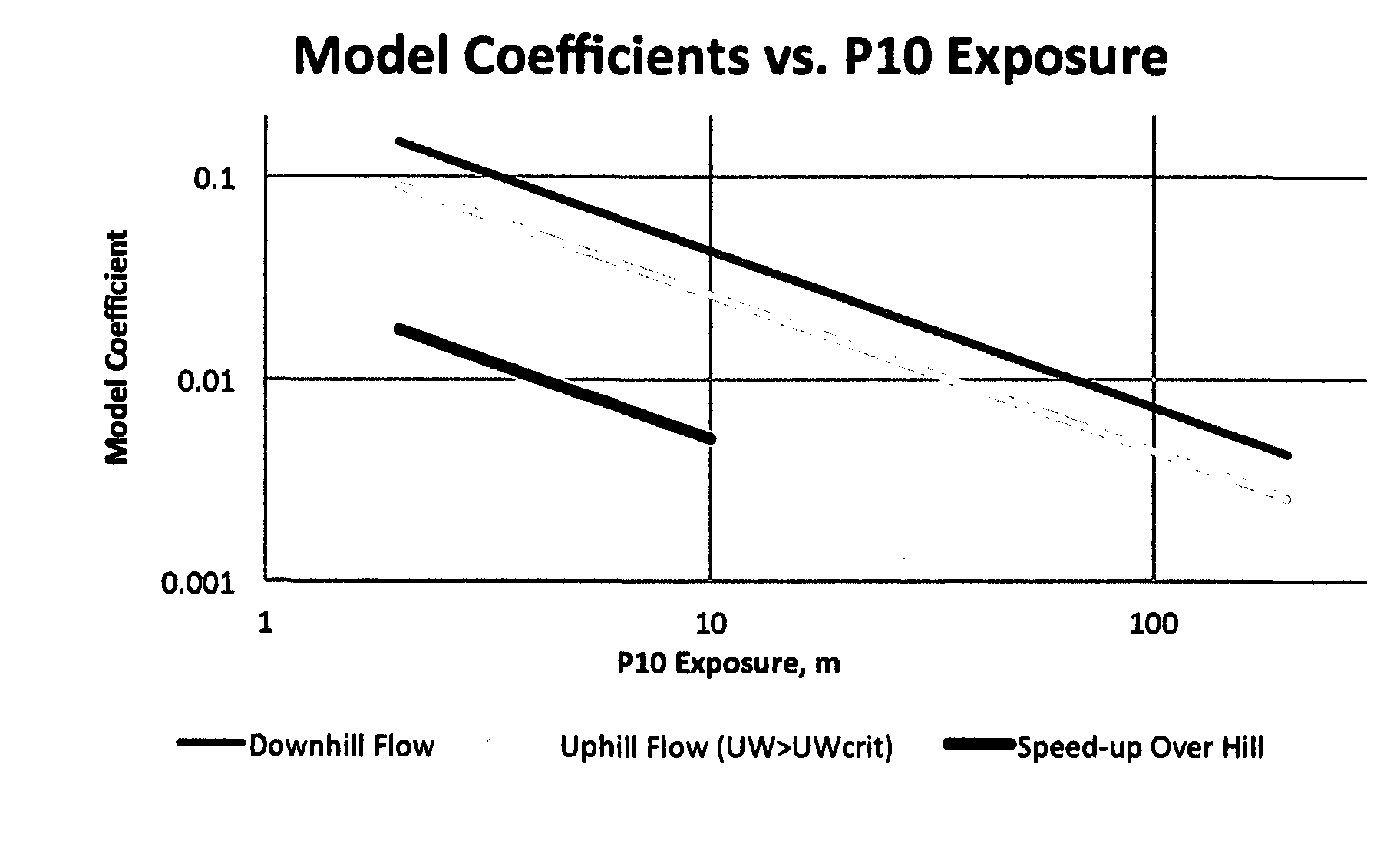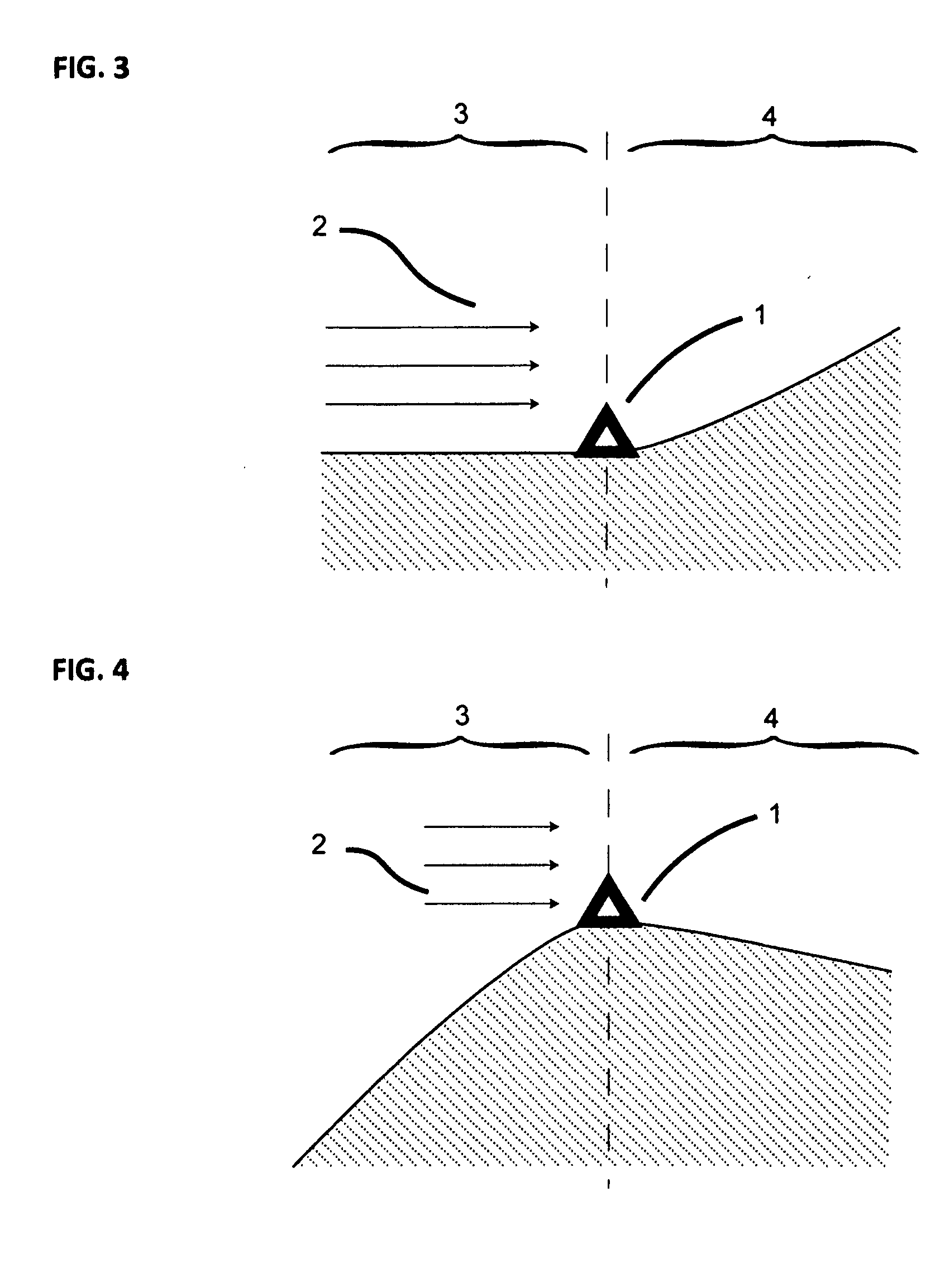Method of evaluation wind flow based on conservation of momentum and variation in terrain
a technology of momentum conservation and wind flow, applied in the direction of fluid speed measurement, instrumentation, design optimisation/simulation, etc., can solve the problems of not being representative of the true potential of the wind farm, not being representative of long-term climatic conditions, and not being able to observe the wind flow across a given area
- Summary
- Abstract
- Description
- Claims
- Application Information
AI Technical Summary
Benefits of technology
Problems solved by technology
Method used
Image
Examples
Embodiment Construction
[0032]The invention disclosed herein describes a new model to predict the spatial variation of wind flow at a site. The invention uses derivations of Newton's second law, which states that the change in momentum of a moving fluid is equal to the net force acting on that fluid. The Navier-Stokes equation is used to represent Newton's second law, and is described on pages 190-191 of Fluid Mechanics with Engineering Applications, 9th Edition, 1997 by Joseph B. Franzini and John E. Finnermore, and incorporated herein by reference. Further detail on the derivations of the equations behind the present invention from Navier-Stokes can be found in Continuum Wind Flow Model: Introduction to Model Theory and Case Study Review by Elizabeth Walls, incorporated herein by reference. In the following discussion, the following variables are defined:
[0033]UW: Upwind
[0034]DW: Downwind
[0035]θ: Slope of terrain.
[0036]WS: Wind speed.
[0037]WD: Wind direction sector
[0038]Xi=the ith easting coordinate in t...
PUM
 Login to View More
Login to View More Abstract
Description
Claims
Application Information
 Login to View More
Login to View More - R&D
- Intellectual Property
- Life Sciences
- Materials
- Tech Scout
- Unparalleled Data Quality
- Higher Quality Content
- 60% Fewer Hallucinations
Browse by: Latest US Patents, China's latest patents, Technical Efficacy Thesaurus, Application Domain, Technology Topic, Popular Technical Reports.
© 2025 PatSnap. All rights reserved.Legal|Privacy policy|Modern Slavery Act Transparency Statement|Sitemap|About US| Contact US: help@patsnap.com



